Lower Courthouse Wash: Out of the Beaten Path in Arches National Park
No Comments
Arches National Park is, of course, renowned for its more than 2,000 documented arches, as well as other sandstone rock formations. However, as always, there is more to discover than the main attractions. Follow me along the less-traveled Courthouse Wash route where besides experiencing an unexpected desert river environment, you are sure to get away from the crowds that often overwhelm the park.
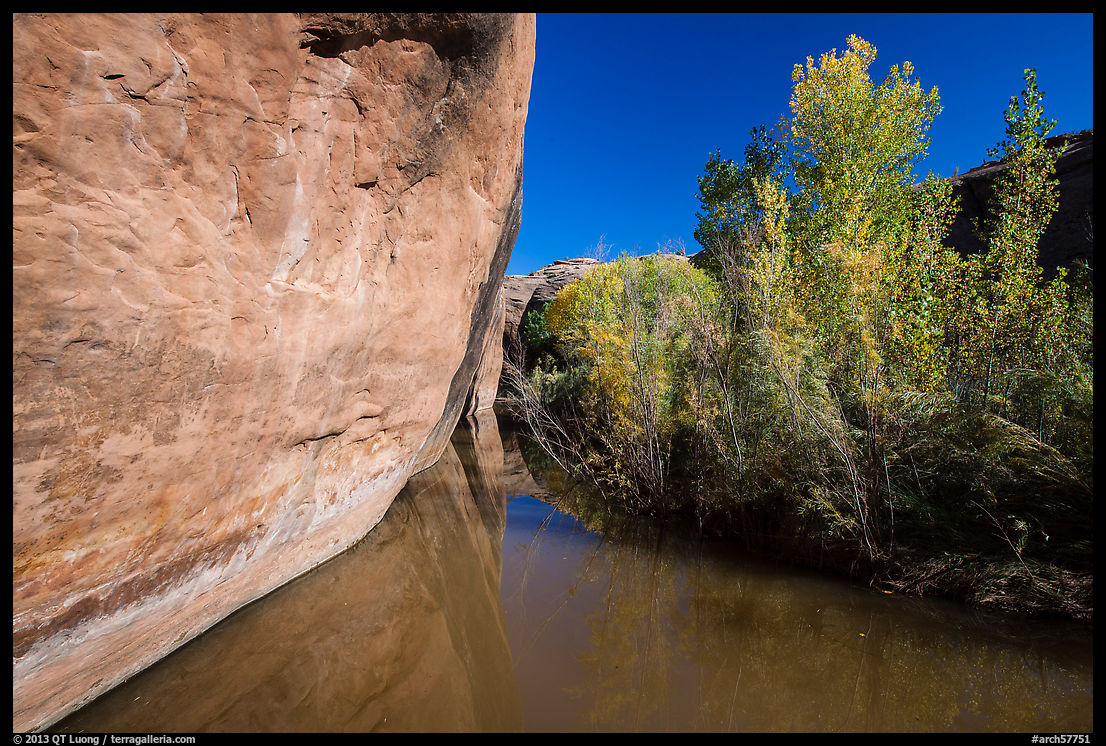
Arches National Park combines high visitation of more than 1.5 million annually and a relatively small area, making it one of the most crowded parks in the Colorado Plateau area. Think that you may beat the wait times and crowds by traveling off-season and getting up early? Look at this notice from last fall:
No wonder that in 2022, Arches National Park felt compelled to issue an advance reservation system with mandatory timed entry tickets. Getting inside the park is only half the battle, as you are likely to find parking lots at popular trailheads totally filled and heavy foot traffic on the trails. By contrast, for most of the entire October day when I explored the Lower Courthouse Wash, an easily accessible hike, I did not meet another hiker. How is it possible?⚠Friday, Oct. 7 8:25am: The park is currently full, and we are temporarily delaying entries into the park. Vehicles attempting to enter the park should return in 3 to 5 hours.
— Arches National Park (@ArchesNPS) October 7, 2022
Consider visiting nearby attractions. Check this account for updates before returning.
Photographing an oasis in the desert
It could be that Courthouse Wash is not marked on the National Park Service official map as a trail, which is why I refer to it as a route instead, nor is it mentioned in guidebooks – even in Laurent Martres’ remarkably comprehensive Photographing the Southwest series. It could also be that along Lower Courthouse Wash, there are no arches to see – although Upper Courthouse Wash, which boats arches, is not much more popular. Instead of arches, the attraction is to experience a refreshing desert oasis hidden in the middle of a arid desert park with no other sources of water and little vegetation.As part of a long-term project approach, I like to try to seek in each national park for a number of common subjects. Besides providing me with something to look for, this typological approach helps illustrate the key idea that each park is an individual environment, yet they are all interrelated. One such subject is autumn foliage, which manifests itself in a variety of ways across the different national parks. Like in any other desert, most of the plants in Arches National Park do not change colors in the autumn. The exception is the deciduous, water-loving plants found in riparian environments, of which Courthouse Wash is one of the most significant in the park.
Toward the end of October, willows and cottonwood trees turned bright yellow. A photograph of a cottonwood could be anywhere, so I sought to provide a sense of place by including an iconic rock formation in the image. From the bottom of the wash, none of them was visible. Near the beginning of the wash, I scrambled up slickrock for a higher viewpoint that showed the Courthouse Towers, after which Courthouse Wash is named. The backlight made the leaves glow and concentrated the attention on the shape of the rock towers, towards which the receding perspective of the trees led. Later in the day, I used low side-light to create a layered composition contrasting the foliage and the surrounding red rock, with a rock wall in the shade forming a clear delineation for the tree tops.
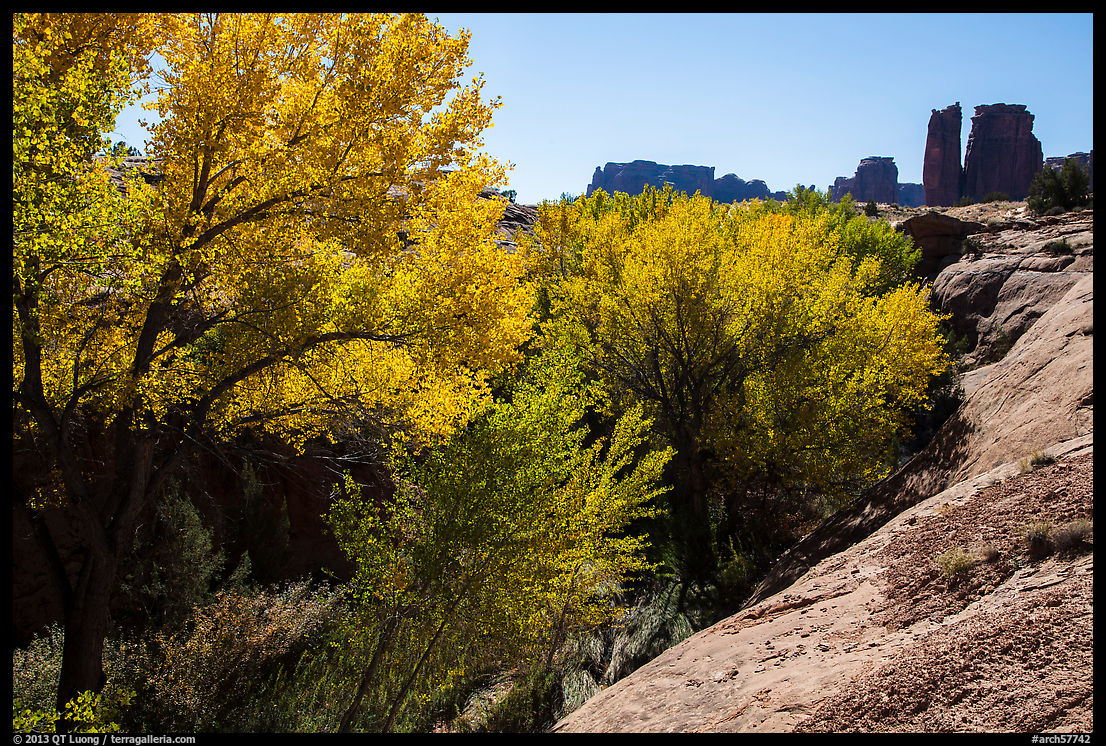
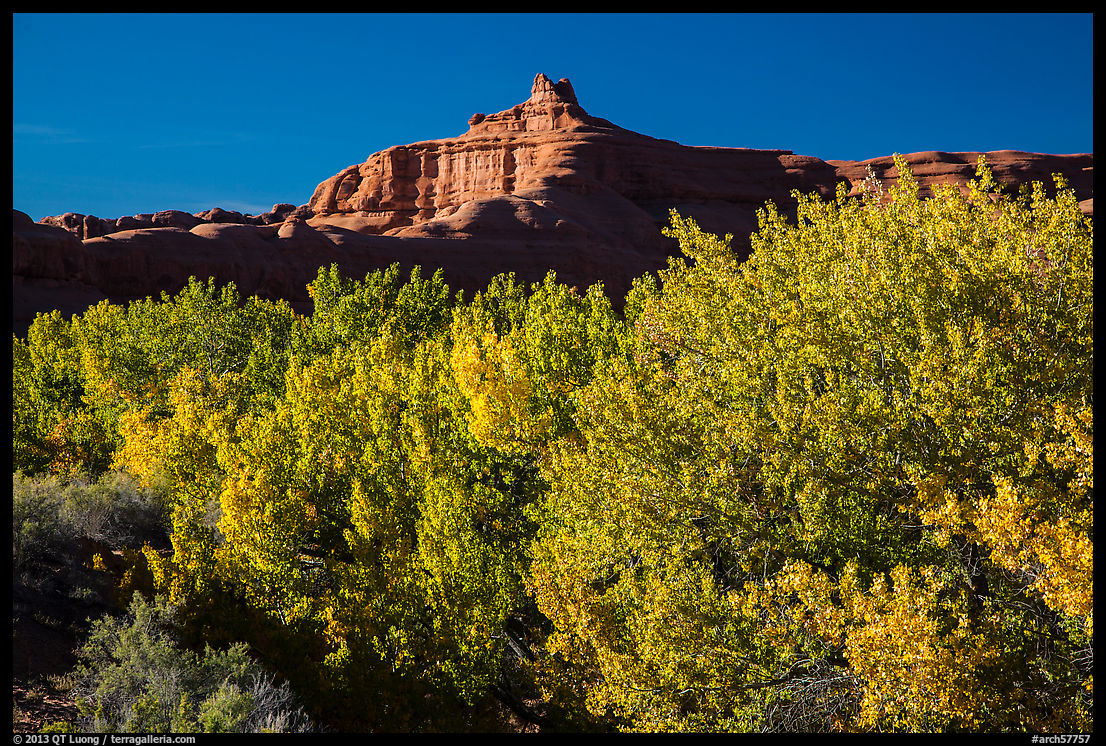
When walking inside the wash, the larger landmarks of the landscape are no longer visible, especially as I continued downstream, the canyon grew deeper and its walls taller. I reveled in the lushness surrounding me and in the stories of the place told by smaller details. Photographed backlit against a shaded canyon wall, the trunks of cottonwoods were rendered as a darker, unbroken shape contrasting with a continuous field of brilliant vegetation that filled up the picture. A closer look at the ground revealed an unexpected richness of plant life with fascinating textures and colors. Wildflowers that you’d expect in spring were still blooming in October, alongside fallen leaves. Adding to the juxtaposition of seasons, grasses were laid down horizontally along the ground. A testament to the power of powerful flash floods that sweep the canyon during the summer monsoons, they infused the photograph with movement. Those ground details are best photographed in soft light, so I sought them in the shade of the canyon walls.
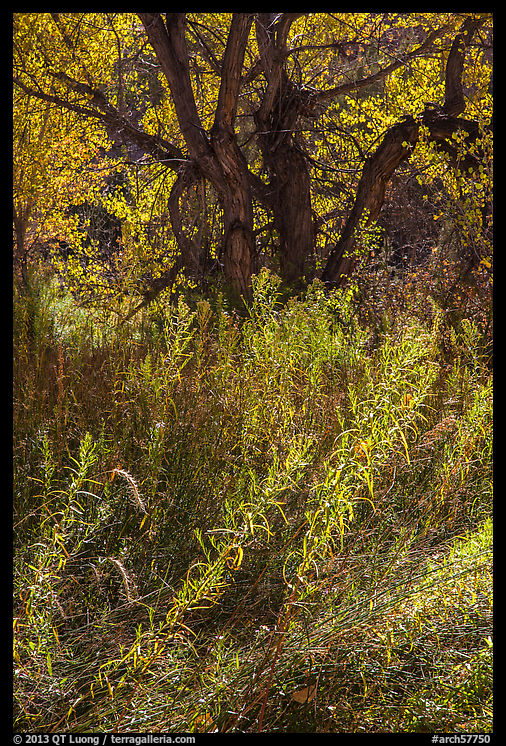
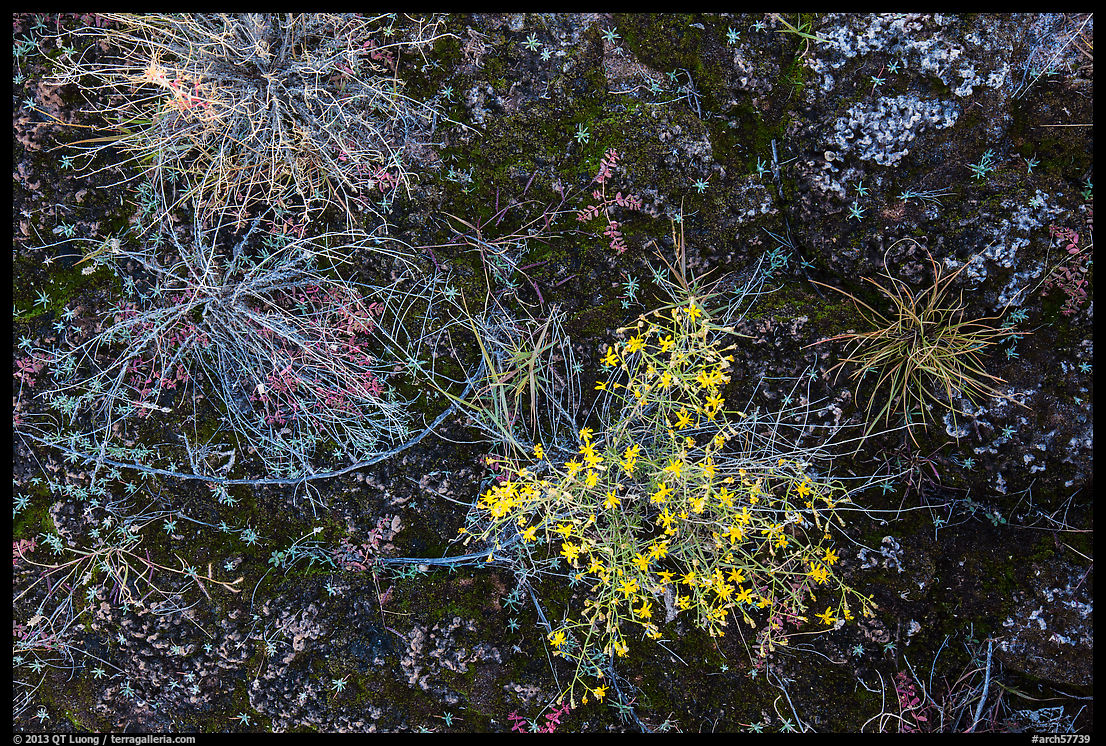
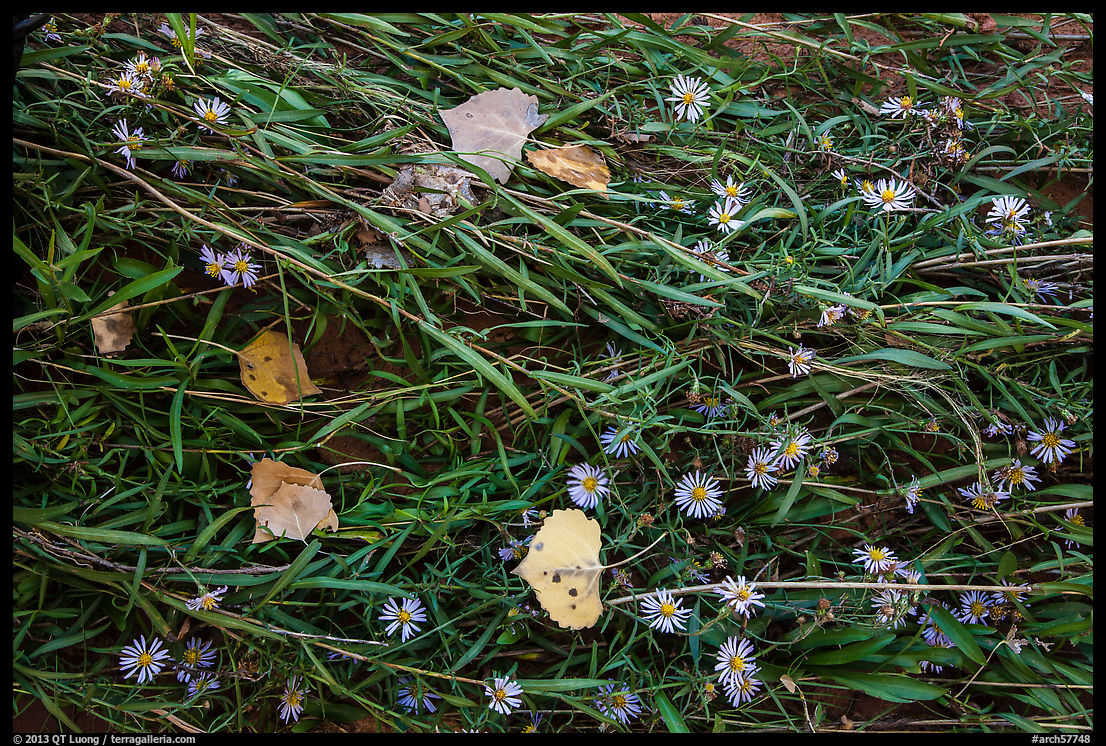
Hiking
To immerse myself in the wilderness in primeval nature, and also enjoy the fun of finding my own path, I always love hiking away from the trails. However, in many environments, off-trail hiking is to be strictly avoided because of its impact on the vegetation. One such environment is the alpine tundra where owing to the growing season being limited to a month and half, the tiny plants have to work so hard for their survival that just a dozen footsteps will bring them to their demise. Another extremely fragile environment is the desert biological soil crust (also called cryptobiotic soil), which looks like patches of dark, knobby dirt, but is actually a living community of small organisms. Consisting of soil cyanobacteria, lichens and mosses, the delicate crust plays an important ecological role in the desert for soil stability, moisture retention, and plant nutrition. It can take anything from decades to centuries to recover from a single trampling. Arches National Park is generally full of biological soil crust. Although the National Park Service does not prohibit off-trail hiking in the park, the likelihood to encounter cryptobiotic soil is reason enough for refraining from wandering in many places. A desert wash like Courthouse Wash is not one of those places because the periodical flash floods hardly allow the formation of cryptobiotic soils. You are walking most of the time on sands.When hiking cross-country, route finding can be a challenge, but hiking Courthouse Wash, I effortlessly followed the main canyon downstream. There are user trails on both banks, and by sticking to them, it is probably possible to hike the entire route with about only a dozen river crossings. However, with frequent patches of deep sand and occasional patches of quicksand, the sandy riverbanks didn’t offer consistent footing for a quick progression. Often I found wading straight in the creek easier, as the bed is formed by firmer sand. I wore shoes that work well when wet, just like I would do for a water hike like the Zion narrows, so getting my feet wet was the least of my worries. I suppose if you came during the summer, you’d even enjoy refreshing yourself in the swimming holes.
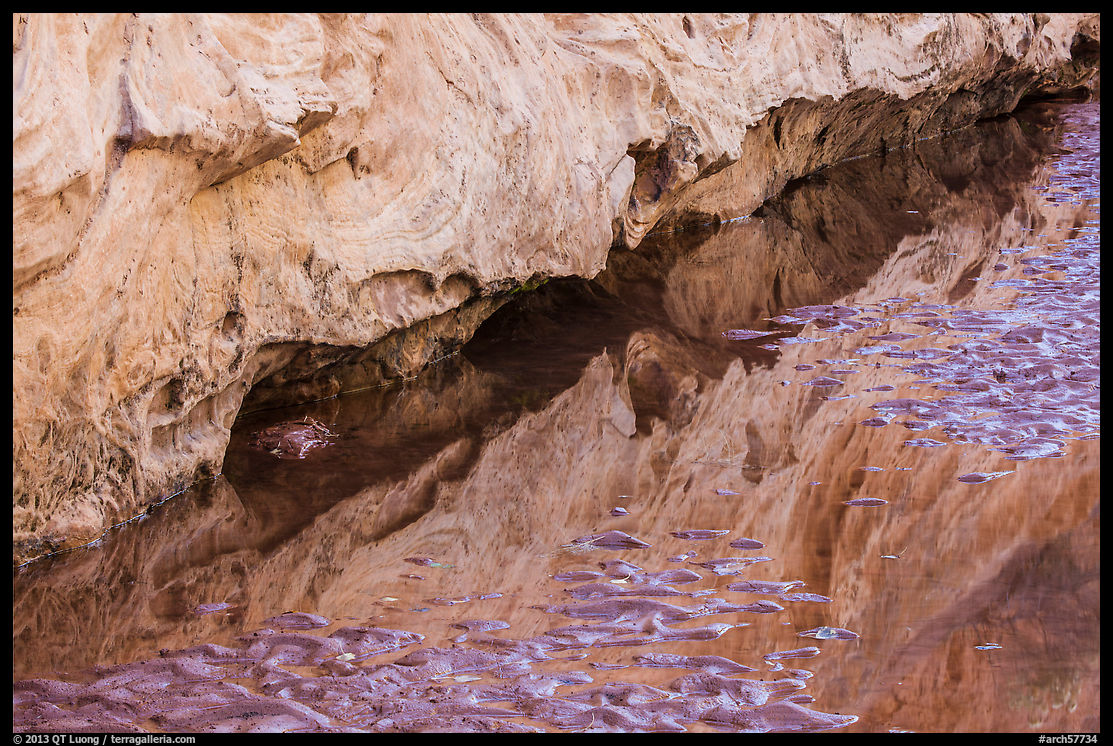
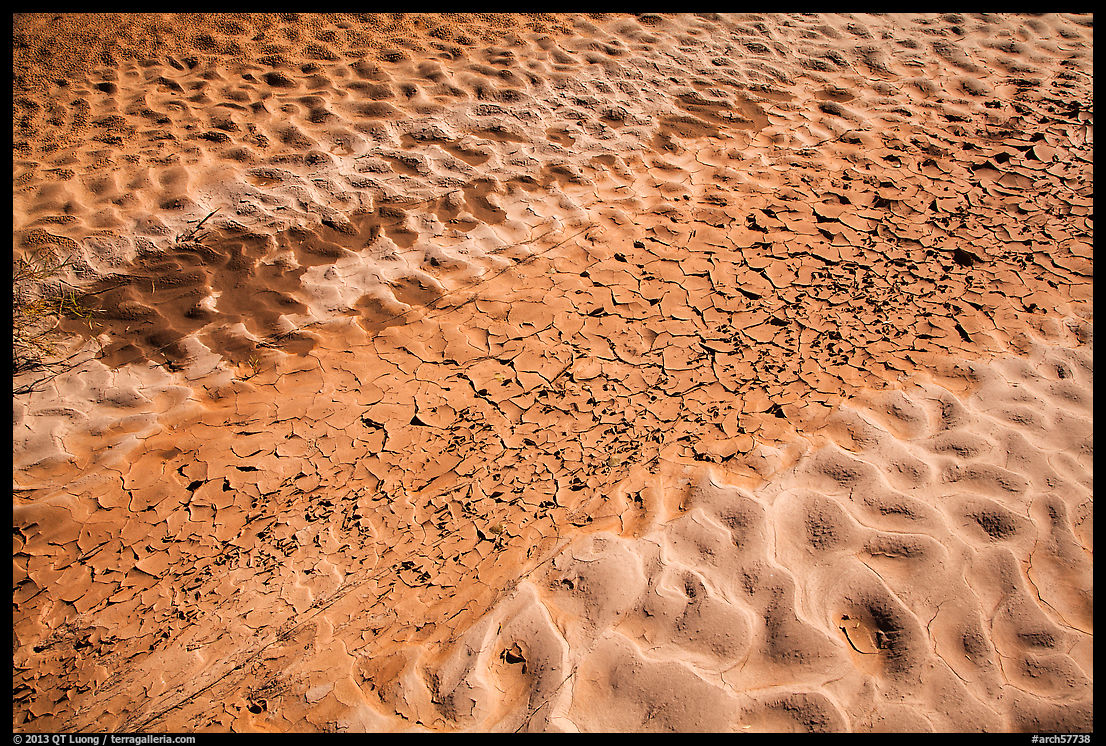
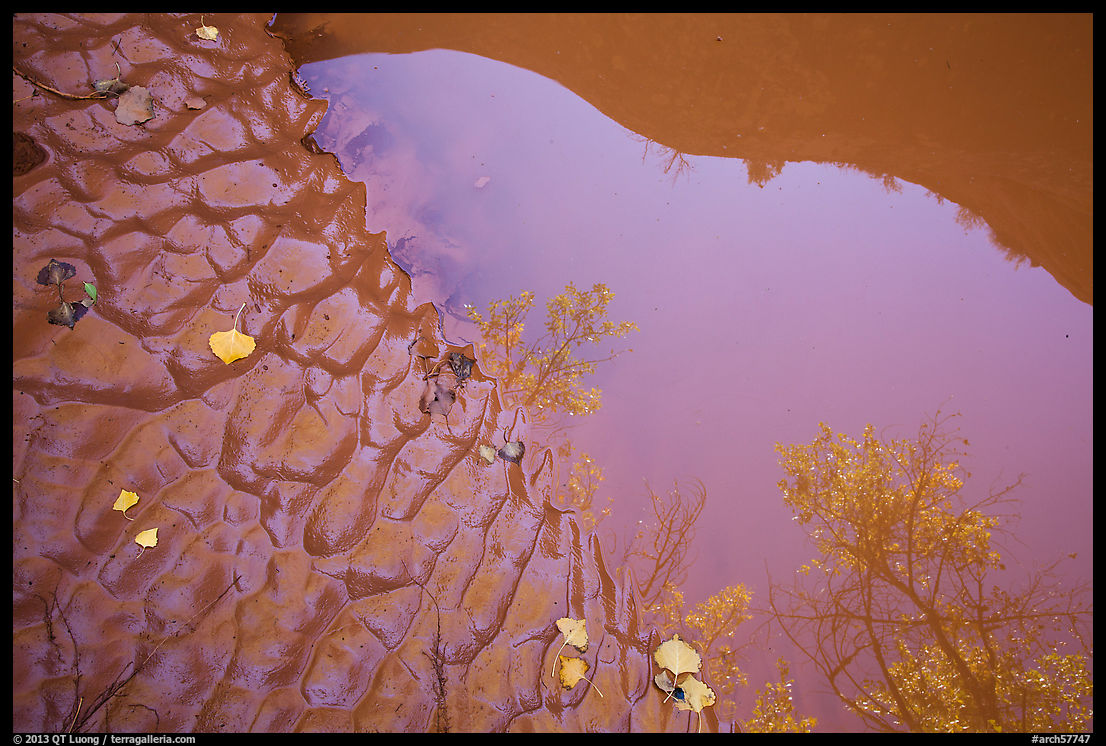
Directions
Lower Courthouse Wash stretches for 5.5 miles and is mostly flat. Ideally, you’d arrange a shuttle to hike one-way. Conversely, if you want to extend hiking, there are a number of side canyons to explore. The upper trailhead is located just north of the Tower of Babel and the only bridge on the park road, which is 4.5 miles north of the park entrance. Park at the large pull-out on the north (left) side of the road and walk across the road and into the wash at the bridge. If you seek a short walk, walking just a quarter of a mile will lead you to the first water hole and allow you to see this different environment.The lower trailhead is located next to Moab along US-191. There is a parking lot just half-a-mile west of the highway bridge above the Colorado River from which you’d walk back towards the wash along the Moab Canyon Pathway. Since that trailhead is just outside the park, there is no fee and you can get in even if the park entrance has been closed to vehicles because it is full! East of the wash, the sizable Courthouse Rock Art panel includes both pictographs and petroglyphs and is located at the base of the cliffs overlooking the highway.

